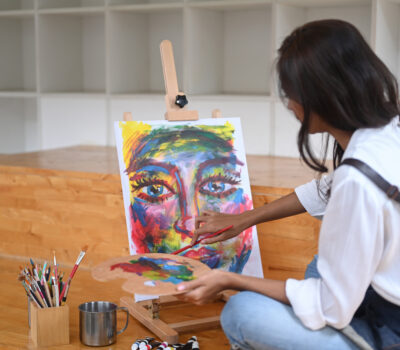Recovery from addiction is not just about physical healing; it also involves emotional growth and expression. Creative outlets provide a powerful means for individuals in recovery to explore their emotions, reduce stress, and maintain sobriety. Engaging in creative activities can help channel feelings that may be difficult to express through words alone.
The Role of Creativity in Recovery
Creativity can serve as a therapeutic tool, allowing individuals to process emotions, work through trauma, and express themselves in a healthy way. Whether it’s through art, music, writing, or other forms of creative expression, these activities can help people in recovery connect with their inner selves and find new ways to cope with challenges.
Creative expression can also foster a sense of accomplishment and boost self-esteem, which are critical during the recovery process. By focusing on a creative project, individuals can shift their attention away from cravings and negative thoughts, replacing them with positive, constructive energy.
Types of Creative Outlets
- Art Therapy
Art therapy involves using visual arts, such as painting, drawing, or sculpting, to explore emotions and resolve psychological conflicts. It’s a powerful way to express feelings that might be too overwhelming or complex to verbalize. Creating art allows for a safe exploration of emotions and can lead to insights that contribute to healing and growth. - Writing and Journaling
Writing is a versatile outlet that can take many forms, including journaling, poetry, or storytelling. Keeping a journal is a common therapeutic practice that allows individuals to track their progress, reflect on their experiences, and release pent-up emotions. Writing can also help clarify thoughts and provide a structured way to process the complexities of recovery. - Music and Dance
Music therapy and dance provide an outlet for emotional expression through rhythm and movement. Playing an instrument, singing, or simply listening to music can evoke emotions and create a sense of connection. Dance, on the other hand, combines physical movement with emotional release, offering a way to express feelings physically and rhythmically. - Crafting and DIY Projects
Engaging in crafting activities, such as knitting, woodworking, or DIY projects, can be both soothing and rewarding. These activities require focus and concentration, which can help calm the mind and reduce stress. Completing a project provides a tangible sense of accomplishment, reinforcing positive feelings of capability and self-worth.
Incorporating Creativity into Recovery
Integrating creative outlets into your recovery plan can enhance your emotional well-being and support long-term sobriety. Harris House encourages the use of creative therapies as part of a holistic approach to recovery. Our Intensive Outpatient Program offers various therapeutic activities that can help you explore your creative side while working through the challenges of recovery. Additionally, our Family Program provides resources to help loved ones understand the role of creative expression in the recovery process.
Creative outlets are a valuable tool for emotional expression and healing in recovery. By engaging in activities such as art, writing, music, or crafting, individuals can explore their emotions, reduce stress, and foster a sense of accomplishment. Incorporating these practices into your recovery journey can provide a constructive and positive way to maintain sobriety and improve overall well-being.








